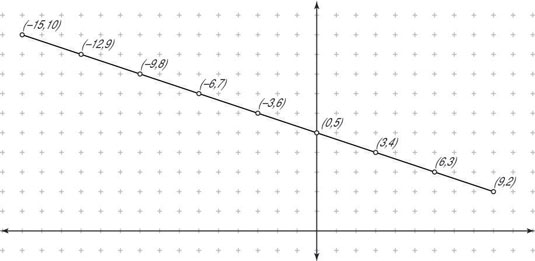Plot 9/10 And 1 2/5 On The Number Line
Starting in R2019b, you can display a tiling of plots using the tiledlayout and nexttile functions. Call the tiledlayout function to create a 2-by-1 tiled chart layout. Call the nexttile function to create an axes object and return the object as ax1.Create the top plot by passing ax1 to the plot function. Add a title and y-axis label to the plot by passing the axes to the title and ylabel. Plotting Fractions on Number Line. The process works in the same way with finding and plotting fractions. The easiest fractions to start with are 'proper fractions', which are fractions that are of a size less than 1. So the only part of a number line that we would need to be concerned with using is the interval between 0 and 1.
- Equivalent Fraction
- Introduction
- Understanding Equivalent Fractions
- Equivalent Fractions
- Introduction to Simplifying a Fraction
- Simplifying a Fraction Advanced
- Plotting & Ordering Fractions
- Fractional Position on a Number Line
- Plotting Fractions on a Number Line
- Ordering Fractions With The Same Denominator
- Ordering Fractions With The Same Numerator
- Using a Common Denominator to Order Fraction
- Selected Reading
A number line is a straight line with a 'zero' point in the middle, with positive and negative numbers marked on either side of zero and going on indefinitely. Here we plot fractions and mixed numbers on the given number line. The given number line has each of its units divided into a number of fractional parts. We identify the whole numbers between which the given fractional number lies and the fractional part it represents. Then we plot the given fraction on the given number line.
Plot 1$frac{1}{2}$ and 2$frac{4}{6}$ on the number line below
Solution
Step 1:
We must first count the number of parts between 0 and 1.
We find that the marks divide 1 unit into 6 equal parts. This means that the marks are 1/6 of a unit apart.
Step 2:
1$frac{1}{2}$, lies between 1 and 2. Because 1$frac{1}{2}$ = 1$frac{3}{6}$. The point representing it is 3 marks to the right of 1.
Step 3:
2$frac{4}{6}$, lies between 2 and 3. The point representing it is 4 marks to the right of 2.
Plot 2$frac{3}{8}$ and 1$frac{1}{4}$ on the number line below
Solution
Step 1:
We find that the number line between 0 and 1 is divided into 8 parts.
Step 2:
We plot 1$frac{1}{4}$ as 1$frac{2}{8}$, two divisions after 1.

Step 3:
We plot 2$frac{3}{8}$ as three divisions after 2.
Plot 9/10 And 1 2/5 On The Number Line Multiplication

Plot 9/10 And 1 2/5 On The Number Line
- Subtract: 1/2 - 1/5 = 1 · 5/2 · 5 - 1 · 2/5 · 2 = 5/10 - 2/10 = 5 - 2/10 = 3/10
For adding, subtracting, and comparing fractions, it is suitable to adjust both fractions to a common (equal, identical) denominator. The common denominator you can calculate as the least common multiple of the both denominators - LCM(2, 5) = 10. In practice, it is enough to find the common denominator (not necessarily the lowest) by multiplying the denominators: 2 × 5 = 10. In the next intermediate step the fraction result cannot be further simplified by canceling.
In words - one half minus one fifth = three tenths. - Subtract: the result of step No. 1 - 5 = 3/10 - 5 = 3/10 - 5/1 = 3/10 - 5 · 10/1 · 10 = 3/10 - 50/10 = 3 - 50/10 = -47/10
For adding, subtracting, and comparing fractions, it is suitable to adjust both fractions to a common (equal, identical) denominator. The common denominator you can calculate as the least common multiple of the both denominators - LCM(10, 1) = 10. In practice, it is enough to find the common denominator (not necessarily the lowest) by multiplying the denominators: 10 × 1 = 10. In the next intermediate step the fraction result cannot be further simplified by canceling.
In words - three tenths minus five = minus forty-seven tenths.